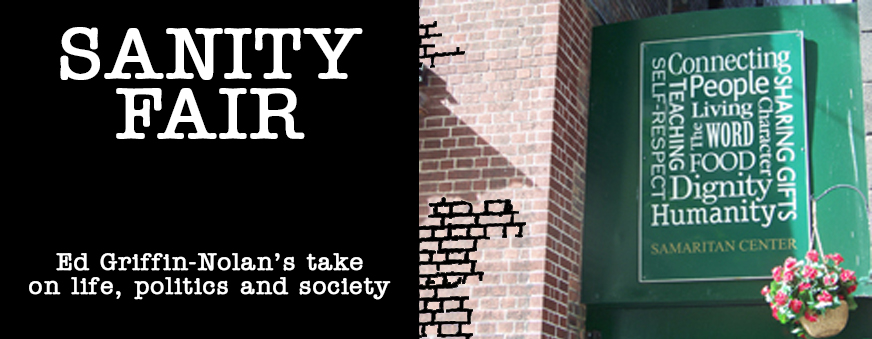In the bustling dining room of Laci’s Tapas Bar, just after the conclusion of an anticlimactic meeting on Sept. 23, Jim Miller stood and thought about his passion: feeding the hungry. Neighborhood activists were preparing to celebrate their victory, having run Miller and the Samaritan Center out of their neck of the woods, but Miller had already turned his thoughts to the next steps.
Jim Miller is an architect by day, and in his spare time serves as the board chair for the Samaritan Center. He was part of the team that, with all good intentions, walked into a building at James and Catherine streets and stepped into deep doodoo.
The charitable program that Miller, a staff of six, and hundreds of volunteers tend to daily feeds as many as 150 people breakfast, then turns around and feeds them dinner. He points out that it’s not always 300 people a day, and it’s never 300 at the same time, but it is enough that Hawley Green neighbors rebelled at the notion of hosting them.
Area residents and businesspeople grew alarmed when they heard that Samaritan, which pretty much has to get out of the basement of St. Paul’s Cathedral, had submitted a proposal for a zoning variance, and the city had granted the change, without giving them a chance to speak up. (All this took place on the day that Barack Obama was visiting Henninger High School, which might explain why nobody was paying much attention to a routine planning board meeting.)
Miller and his crew threw in the towel when it was made clear to them that the neighbors were not happy. It wasn’t an easy call for the Samaritans, who had looked at 18 sites and found each of them lacking in one respect or another before they came upon 316 Catherine St. You could see in their eyes that they’d really like a do-over, a chance to approach their prospective neighbors in a way that wouldn’t get their hackles up.
But that bell had been rung, and it couldn’t be unrung. It was time to move on. But where to? People who know about these things were hard pressed to come up with an example of a social service operation of this size making a move.
How do you find a daytime home for 300 homeless people? Do you want that in your neighborhood? Your small town? Your suburban village? Think about it.
Here’s the thing: Most of the people fed by the Samaritans are not homeless. They are working, and yet remain so poor that they cannot feed themselves and the ones they love.
Back in the 1980s when the Reagan-era budget cuts collided with the Carey-era deinstitutionalization of the mentally ill and filled Syracuse’s streets with poor people in need of help, already generous Central New Yorkers chipped in, volunteering time and donating food. The Samaritan Center was a welcome addition to a number of private, mostly religious efforts to sustain the destitute poor.
Back then they fed 100 people on a busy day. Today, that number has tripled—and that’s not all. Three decades and one deep recession later, the good Samaritans are not just serving those poor who, as their leader once famously said, would always be with us. They are serving people who should be able to care for themselves: the working poor.
As Miller tried to explain, many of the morning visitors to the center don’t just stop by for breakfast. They pack a sandwich in their pocket to take to work. And they don’t come back for lunch; they’re on the job.
I asked Miller, “Why not just stop?” Shut it down, and let government pick up the slack. This explosion of poverty and inequality is no longer a case for charity: It’s a matter of justice. It’s time that we as a country paid the price for the type of society we have created. Nearly 30 percent of families in our town live in poverty, more than triple the percentage in 2008. More than half of all city kids live in poverty.
Of course, the Samaritans will never close the door. They won’t stop feeding the ones they care for. But what a gesture it would be, while they hunt for a new home, to tell the rest of us that poverty isn’t the fault of the poor.
Kind hearts can’t undo the pain caused by cruel social policies.
Read Ed Griffin-Nolan’s award-winning commentary every week in the Syracuse New Times. You can reach him at [email protected].
Beyond Charity

By
Posted on

With poverty on the rise in the Salt City, who will host the Samaritan Center?








